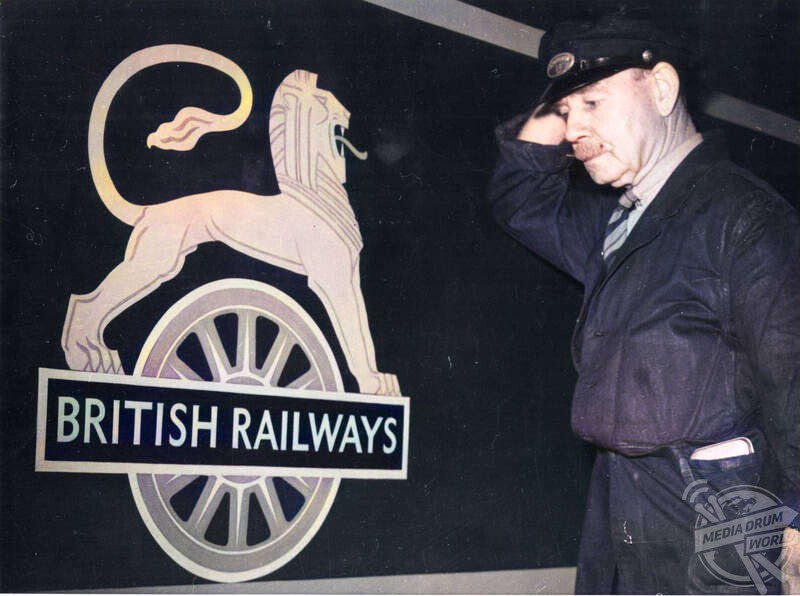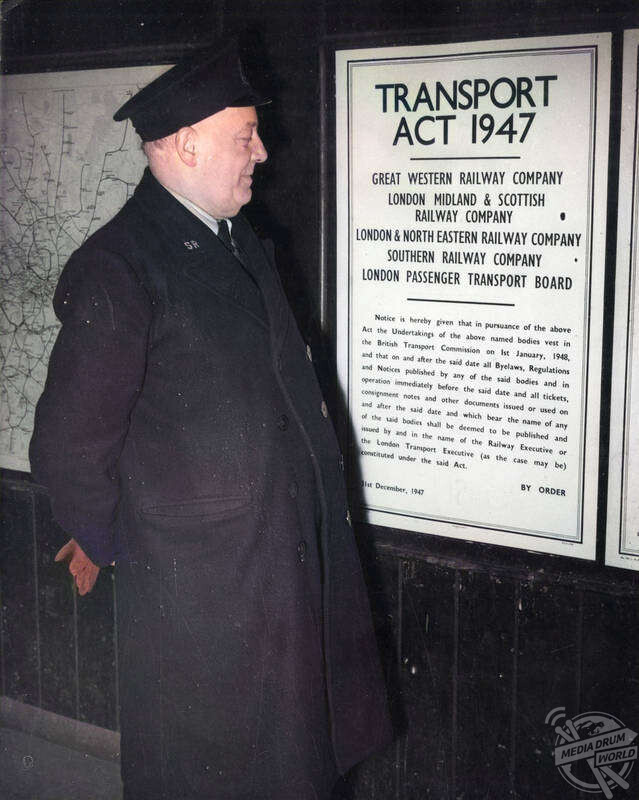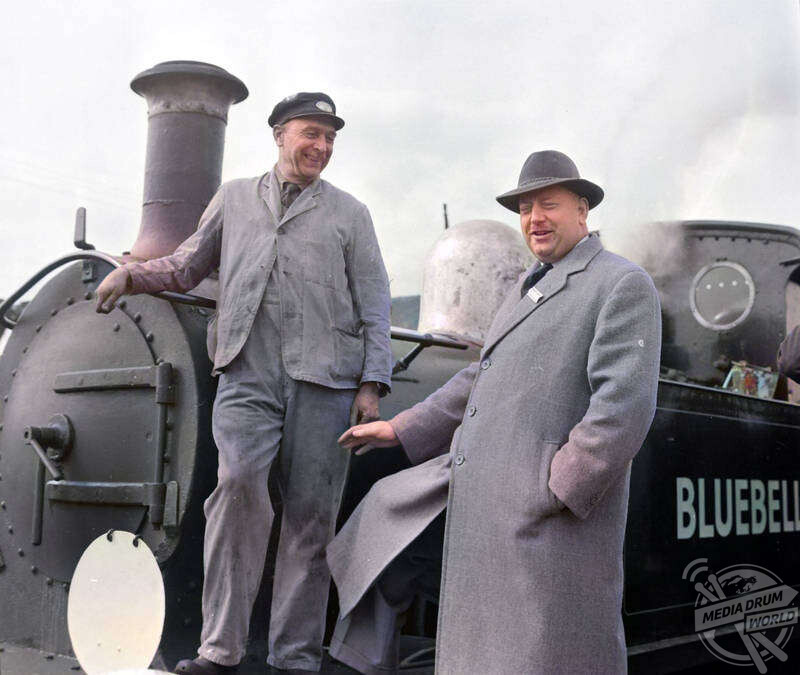By Kate Harrold
NEWLY colourised images show how Britons reacted to the nationalisation of the RAILWAYS almost 75 years ago.
In one image, 67-year-old rail worker Philip Martyr – known to many passengers as Sam – paused to read a poster announcing the nationalisation of the railways at Charing Cross Station in London on December 30, 1947.
In another, a Great Western Railway (GWR) logo was spray painted over a road-wagon at Paddington Station in London, on January 12, 1948, eliminating this private branding following the railway’s nationalisation.

Others showed Richard Beeching examining a railway model at an exhibition in London on November 19, 1963, and a train driver named G. T. Till saluting the very first British Railways logo at Waterloo Station in London on February 15, 1949.
The incredible images have been newly released by the TopFoto Archives and painstakingly colourised – offering a new view on Britain’s rail history.
Shortly after World War II, Clement Attlee’s Labour party nationalised Britain’s railways through the 1947 Transport Act, although the decree didn’t come into effect until January 1, 1948.

Previously, the railways had been managed by four companies: Great Western Railway, London, Midland and Scottish Railway, London and North Eastern Railway, and Southern Railway. When these assets were taken over by the government, they collectively became known as British Railways.
In the 1960s, physicist and engineer Richard Beeching published his ideas on increasing the efficiency of Britain’s railways. He identified 5,000 miles worth of tracks and 2,363 stations that he believed should shut. These closures were heavily protested, although many eventually went ahead.
Beeching is continually associated with the mass loss of local rail services. Some services have reopened, and some are run as heritage projects, but many remain closed.

In the 1990s, the railways were privatised by Margaret Thatcher but after three decades, Boris Johnson’s Conservative government has recently announced plans to scrap this franchise system in a major overhaul of this key transport network. The government will now manage ticketing, timetables, and track maintenance under the title Great British Railways.







